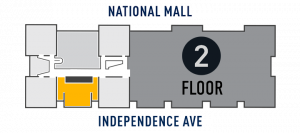To insure that drinking water during the Apollo missions did not become contaminated with microorganisms, chemical disinfectants were periodically injected into the water supply by the astronauts. A chlorine solution was used for the Command Module. The chlorine (sodium hypochlorite diluted to 1860 mg/L) was contained in 20 cc cylindrical ampules. 20 minutes before water was consumed, the ampule was inserted into the water tank. Immediately afterward, a second ampule, like this one, containing a buffer (sodium dihydrogen phosphate), to neutralize the pH of the water, and an inhibitor (sodium nitrate), to slow corrosion, was inserted. After waiting the 20 additional minutes for the chemicals to disperse throughout the tank, the water was potable.
This buffer ampule was flown on Apollo 11 Command Module and was returned unused. It was transferred from NASA to the Smithsonian along with the rest of the contents of the Command Module in 1970.
Display Status
This object is on display in Destination Moon at the National Air and Space Museum in Washington, DC.

Object Details
Country of Origin
United States of America
Type
SPACECRAFT-Crewed-Life Support
Manufacturer
Unknown
Dimensions
3-D: 3.5 × 3.5 × 7.6cm (1 3/8 × 1 3/8 × 3 in., 0.1lb.)
Materials
Plastic
Coating
Synthetic
Exterior: Hard-case Teflon
Contents: sodium dihydrogen phosphate
Inventory Number
A19700102152
Credit Line
Transferred from the NASA - Johnson Space Center
Data Source
National Air and Space Museum
Restrictions & Rights
Usage conditions apply
For more information, visit the Smithsonians Terms of Use.